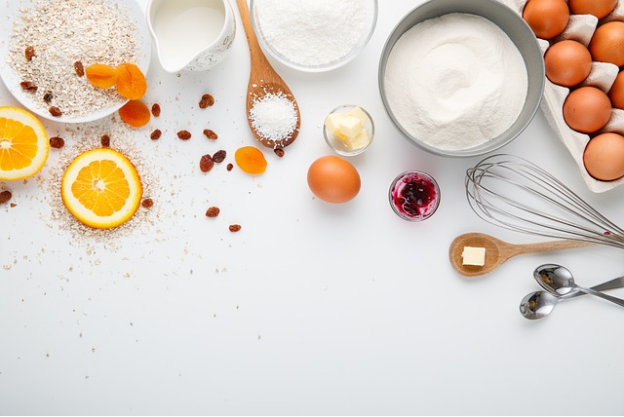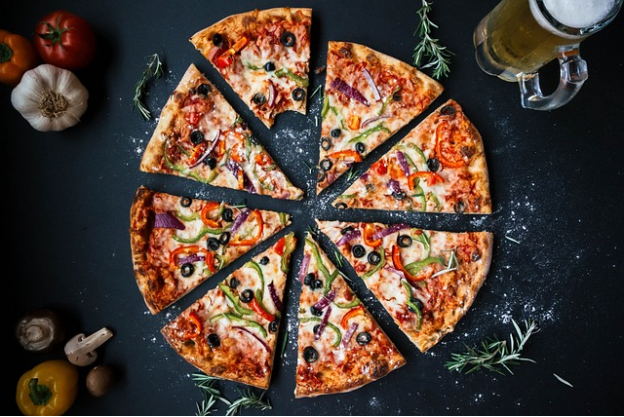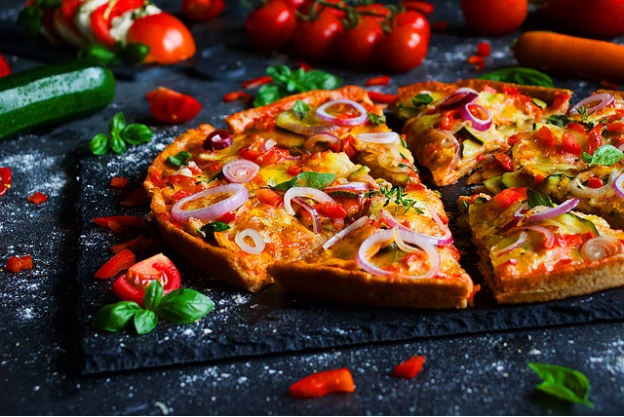Making a restaurant-quality pizza right in your kitchen is easier than you might think! With the perfect ingredients, a little patience, and the right techniques, you can create a homemade pizza experience that rivals your favorite pizzeria. The foundation of a great pie starts with well-prepared dough, whether you’re aiming for a classic Margherita, a fully loaded supreme, or a deep, rich pan pizza. This guide will walk you through essential ingredients, techniques, and baking methods to help you craft the ultimate homemade pizza.

The Perfect Thin-Crust Pizza:
A crisp, light, and flavorful crust is what makes a great thin-crust pizza stand out. The key is achieving the right balance between crunchiness and chewiness while maintaining a delicious texture. Using high-quality all-purpose flour and properly activating yeast ensures the best results.
To start, mix instant yeast or active dry yeast with lukewarm water, a pinch of sugar, and a few tablespoons of olive oil to help the yeast dissolve and activate. Once the mixture forms bubbles, combine it with flour and salt until a smooth dough forms. Knead by hand or with a mixer until it elastic, then place it in a greased bowl, cover it, and let it rise until it’s puffy.
When shaping the dough, roll it into a circle of your preferred diameter and let it rest. Preheat your oven with a stone inside to distribute heat evenly. Assemble your pizza with sauce, cheese, and toppings, then bake on the lower rack until the crust is golden brown and crispy.

The Ultimate Pizza Dough (Inspired by King Arthur Flour):
For a crust with a crunchier texture and deep flavors, this semolina-based dough is a game-changer. The secret lies in fermentation, which enhances the overall taste and structure of your pizza.
To prepare, mix all-purpose flour, semolina, instant yeast, and salt, then add olive oil and cool water. Stir until a smooth, slightly sticky dough forms. Let it rise at room temperature before refrigerating to enhance the crust’s texture and flavor.
When ready, stretch the dough into your desired shape. For an even better crust pre-bake on a stone or pan before adding toppings. Then, finish baking until the crust is crispy and golden brown.

Crispy Cheesy Pan Pizza (King Arthur’s 2020 Recipe of the Year):
If you love crispy, airy crust with caramelized cheese at the edges, this pan pizza is a must-try! The all-purpose flour, salt, instant yeast, and lukewarm water blend beautifully to create the ideal dough.
To start, mix the ingredients, let the dough rest, and perform stretch-and-folds at intervals to strengthen it. Then, let it cold ferment for extra depth of flavor. Once it’s ready, coat a cast iron pan with oil and place the dough inside. Allow it to rise before preheating the oven.
Top your pizza with low-moisture mozzarella, grated Parmesan, and dollops of sauce, than bake on the bottom rack until the crust is golden brown and crisp.

Pro Tips for the Perfect Homemade Pizza
Want to make your homemade pizza even better? Follow these pro tips for a truly professional result:
- Use a baking stone or steel to ensure intense heat distribution for a crispier crust.
- Allow the dough to rest for proper fermentation, creating complex flavors.
- Instead of rolling, try hand-stretching your dough to preserve air pockets for a lighter texture.
- Preheat your oven properly—set it to 450°F or 500°F for the best bake.
- Use quality cheese, like low-moisture mozzarella, for a perfect melt.
- Avoid a soggy crust by pre-cooking veggies and meats before adding them as toppings.

Conclusion
Making homemade pizza is a rewarding experience that allows you to craft a delicious, restaurant-style pie. Whether you prefer a thin-crust, a New York-style slice, or a deep-dish pan pizza, mastering the basics of dough preparation, fermentation, and baking will elevate your pizza-making game. Experiment with different recipes and toppings to create your perfect pie!
This version keeps your key terms intact while making the blog engaging and easy to read! Let me know if you’d like any adjustments.
Other Recipe

Pingback: What to Do in Pisa: Explore Pisa A Step-by-Step Guide - choosewise.info